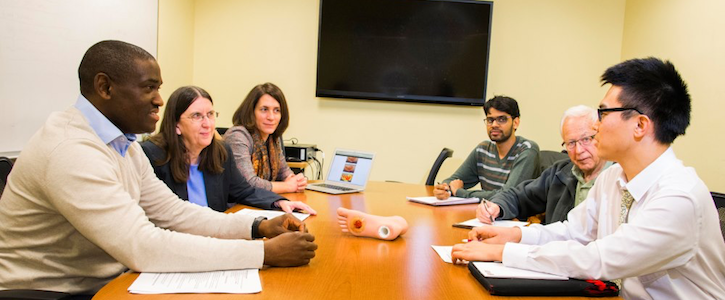Building the $1.6M Wound-Monitoring Smartphone App
The NIH thinks this machine learning tool could cut the costs of caring for chronic wounds.

Image has been resized. Courtesy of Worcester Polytechnic Institute.
When patients have chronic wounds, they often end up spending a lot of time and money on care. Researchers at Worcester Polytechnic Institute (WPI) in Massachusetts, however, hope to ease the burden with a smartphone app that promises to use artificial intelligence (AI) to monitor and analyze chronic wounds, cutting costs and the number of trips. The National Institutes of Health liked the idea enough to throw $1.6 million behind its development over the next 4 years.
“This is a big problem,” said Emmanuel Agu, PhD, the project lead, a computer science professor at the school, and head of WPI’s Mobile Graphs Research Group. “Wounds, wound management, and amputations have a huge cost, both financially and physically, for the people who suffer from them, as well as for their families.”
Agu and his interdisciplinary team are only beginning to develop the app, which will be available first for Android and then the iPhone. Patients and caregivers, like visiting nurses, will use the program to regularly examine threatening wounds from the comfort of home. When the wound becomes dangerous, the app will alert the users to head to the doctor or emergency department.
So, how does it work? The app will enable users to snap photos of the wound through their smartphones, which will then scan the visuals in the app. “Much of my research is in imaging and computer graphics,” Agu said. “Wound management is a problem that imaging technology can help with.”
The researchers are developing machine learning algorithms to measure qualities of the wound, such as size, depth, and color, which signal whether it is healing properly, according to WPI. Over time, the AI will check how the wound is doing: Is it shrinking? Is the tissue darkening? That will help the algorithms determine whether an infection or complication is brewing. Ultimately, the app will inform the patient of the status of the wound and provide 1 of 3 recommendations: sit tight, visit a wound specialist, or get immediate care.
But Agu and company must overcome a sizeable challenge to make the app work. Amateur photographers, it turns out, often capture images that aren’t ideal, making the AI prone to error. To dodge this, the researchers are creating algorithms inspired by facial recognition software and consulting wound experts, which means, if all goes well, the tech will be capable of fixing every image so that the app can make the right decisions.
The app is similar to Agu’s work on Sugar, which performed in much the same way but only for people with diabetes and chronic foot ulcers. The National Science Foundation backed that project to the tune of $1.2 million, according to WPI.
The new app, however, will help patients with a wider range of wounds, including arterial, venous, and pressure ulcers, or bed sores.
It’s a tantalizing effort because of the tremendous price tag associated with chronic wounds. In 2017, researchers found that roughly 2% of Americans suffer from these nonhealing wounds, running a tab of $20 billion per year. According to WPI, $200 million goes toward transportation alone.
“This won’t replace doctor visits entirely, but it will augment those visits,” Agu said. “If people self-monitor, they are more likely to change their behavior, keep a closer eye on their wounds, and take the proper care those dangerous wounds need.”